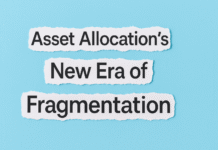Despite global progress in financial inclusion, with the number of unbanked adults falling from 2.5 billion in 2011 to 1.4 billion in 2021 (World Bank), millions still face unusual, often overlooked barriers to digital banking. While the fintech industry continues to drive innovation, several bizarre and unexpected obstacles remain. These strange barriers are not always technological—they’re often psychological, cultural, or rooted in outdated systems. Here are some of the weirdest digital banking barriers preventing greater financial inclusion today.
Too Much Paper in a Digital World
As fintech pushes toward fully digital services, some consumers still face a paradoxical situation: too much paperwork. According to Lasma Kuhtarska, co-founder at Noda, many regions still require piles of physical documentation just to open a basic online account or link a bank for digital payments. This outdated requirement defeats the very purpose of digital banking and reflects how legacy systems resist true digital transformation.
Cultural resistance also plays a role. In some communities, local myths suggest that linking bank accounts online could “drain” funds or expose users to spiritual or technological harm. This type of barrier requires fintechs to invest in education, trust-building, and user-friendly platforms.
Fear of Government Surveillance
Geri Hopkins from Skyla Federal Credit Union notes another unexpected challenge: fear of government tracking. In some regions, people avoid digital wallets, credit cards, or even online bill payments because they believe it allows authorities to monitor their transactions. Overcoming this fear requires transparency and consumer education around data protection and privacy laws.
Excluding the Unconventional
Chris Tremont of Grasshopper Bank highlights how digital banking often excludes entrepreneurs whose businesses don’t fit traditional models. For instance, running a business from a residential address or having an unconventional service structure can result in application rejections. Financial services need more flexibility to accommodate modern businesses.
Data-rich, Insight-poor Institutions
Sara de la Torre at Dun & Bradstreet calls out a strange paradox—banks are full of data but often fail to use it effectively. Due to siloed systems and legacy infrastructure, customer data remains underutilized, resulting in generic or ineffective financial services. Banks must embrace a data-first mindset to offer inclusive, personalized services, especially to underserved communities.
Resistance to Change
Mark Andreev of Exactly pinpoints behavioral inertia as a major yet strange challenge. Many consumers reject new tools like digital wallets or crypto-based platforms without trying them. This reluctance stems from fear, not functionality. Overcoming this requires fintechs to invest in user education and ease-of-use design, not just innovation.
The Credit History Catch-22
John Downie, CEO of SteadyPay, discusses a peculiar problem faced by immigrants and expats: despite having excellent financial records abroad, they often can’t access basic services in a new country due to a lack of domestic credit history. This barrier traps people in a loop where they can’t build credit without already having it.
Being Unbanked in a Banking Superpower
Matthew Sanders of Suits Me highlights the irony that over one million people in the UK—a global fintech leader—remain unbanked or underbanked. Many are gig workers, migrants, or those with non-traditional lifestyles. Despite innovation, the sector has failed to design systems that serve everyone, revealing a disconnect between tech advancement and real-world inclusion.
Overreliance on Single Data Sources
Andy Smith from Snap Finance points out a hidden flaw: firms relying on outdated or single-source data. For example, people in new housing developments may be denied financial services because their addresses don’t exist in legacy systems. Immigrants and young consumers also struggle with “thin” credit files, often excluded by algorithms that only use one credit bureau.
Conclusion
These strange and unexpected digital banking barriers reveal that achieving true financial inclusion requires more than technology. It demands cultural sensitivity, flexible systems, transparent communication, and a willingness to rethink legacy practices. As fintechs evolve, removing these unconventional hurdles will be key to unlocking access for all.











